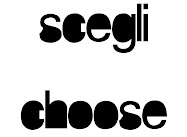Nonostante H&M e Zara già da tempo propongano completi maschili eleganti a poco prezzo, la differenza con quelli dal taglio sartoriale è netta. Qui i 7 punti per riconoscere un completo classico con un taglio di qualità.

(Paul Smith ss2010/11)
(Possibile che in nessuna sfilata dell'ultima setimana della moda maschile io abbia trovato un completo dal taglio classico?)
1. Gli spallotti (o le ovatte!? come le chiamate?) finiscono con le spalle.
2. La mano distesa dovrebbe scivolare facilmente sotto il bavero della giacca quando il primo bottone (o quello centrale) è abbottonato. Se invece fate scivolare un pugno, la stoffa attorno al bottone dovrebbe "tirare".
3. Il primo bottone in un completo a due bottoni - o il terzo nel caso di un completo a tre bottoni - non dovrebbe mai trovarsi al di sotto dell'ombelico.
4. Con le braccia lungo i fianchi, le nocche dovrebbero trovarsi all'estremità inferiore della giacca.
5. Per quanto riguarda le maniche della giacca dovrebbero arrivare dove si trova l'attaccatura tra il pollice e il polso.
6. Il polso della camicia può sporgere da 1.50 cm ad un massimo di 2 cm.
7. 3 cm di bordo.
1. Shoulder pads end with your shoulders.
2. Your flat hand should slip easily into your suit under the lapels when the top (or middle) button is fastened. If you put a fist in, the suit should pull at the button.
3. The top button of a two-button suit — or the middle button of a three-button suit — should not fall below your navel.
4. With your arms at your sides, your knuckles should be even with the bottom of your jacket.
5. Jacket sleeves should fall where the base of your thumb meets your wrist.
6. Between a quarter and a half inch of shirt cuff should be visible.
7. One inch of break.










0 commenti:
Posta un commento
Il commento è libero ma i fatti sono sacri.
C. P. Scott